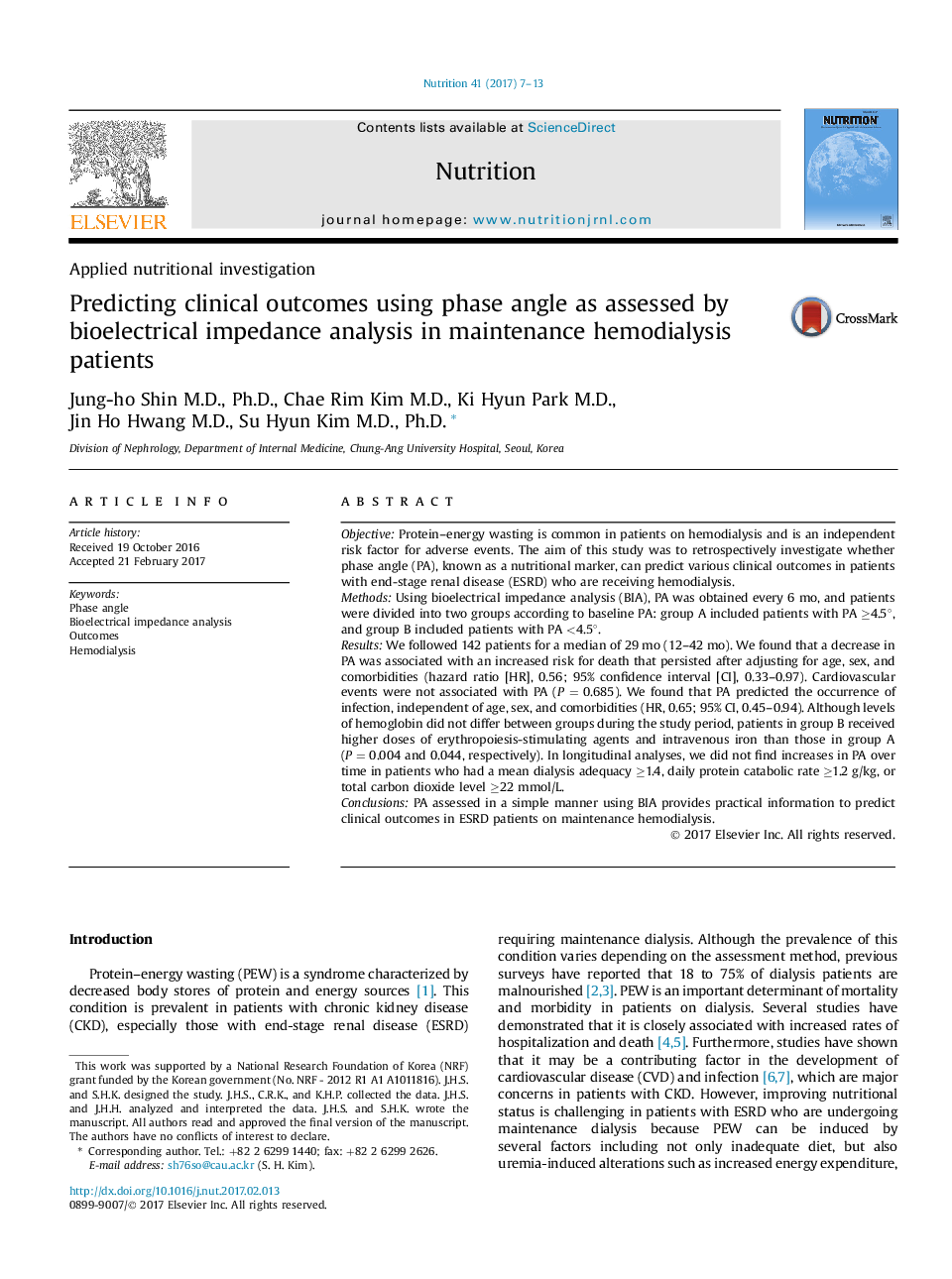| کد مقاله | کد نشریه | سال انتشار | مقاله انگلیسی | نسخه تمام متن |
|---|---|---|---|---|
| 5656835 | 1589657 | 2017 | 7 صفحه PDF | دانلود رایگان |
- Phase angle as assessed by bioelectrical impedance analysis was associated with nutritional markers in patients with end-stage renal disease receiving maintenance hemodialysis.
- Phase angle predicted infection and all-cause death as well as responsiveness to anemia management in patients receiving hemodialysis.
- Optimizing chronic kidney disease management such as dialysis adequacy â¥1.4, daily protein catabolic rate â¥1.2 g/kg, or total carbon dioxide â¥22 mmol/L did not increase phase angle over time.
ObjectiveProtein-energy wasting is common in patients on hemodialysis and is an independent risk factor for adverse events. The aim of this study was to retrospectively investigate whether phase angle (PA), known as a nutritional marker, can predict various clinical outcomes in patients with end-stage renal disease (ESRD) who are receiving hemodialysis.MethodsUsing bioelectrical impedance analysis (BIA), PA was obtained every 6 mo, and patients were divided into two groups according to baseline PA: group A included patients with PA â¥4.5°, and group B included patients with PA <4.5°.ResultsWe followed 142 patients for a median of 29 mo (12-42 mo). We found that a decrease in PA was associated with an increased risk for death that persisted after adjusting for age, sex, and comorbidities (hazard ratio [HR], 0.56; 95% confidence interval [CI], 0.33-0.97). Cardiovascular events were not associated with PA (P = 0.685). We found that PA predicted the occurrence of infection, independent of age, sex, and comorbidities (HR, 0.65; 95% CI, 0.45-0.94). Although levels of hemoglobin did not differ between groups during the study period, patients in group B received higher doses of erythropoiesis-stimulating agents and intravenous iron than those in group A (P = 0.004 and 0.044, respectively). In longitudinal analyses, we did not find increases in PA over time in patients who had a mean dialysis adequacy â¥1.4, daily protein catabolic rate â¥1.2 g/kg, or total carbon dioxide level â¥22 mmol/L.ConclusionsPA assessed in a simple manner using BIA provides practical information to predict clinical outcomes in ESRD patients on maintenance hemodialysis.
Journal: Nutrition - Volume 41, September 2017, Pages 7-13
